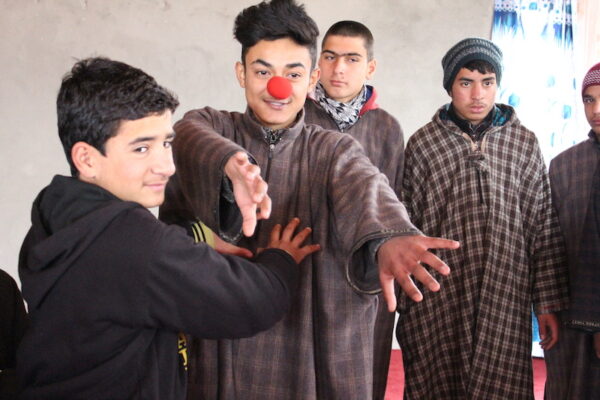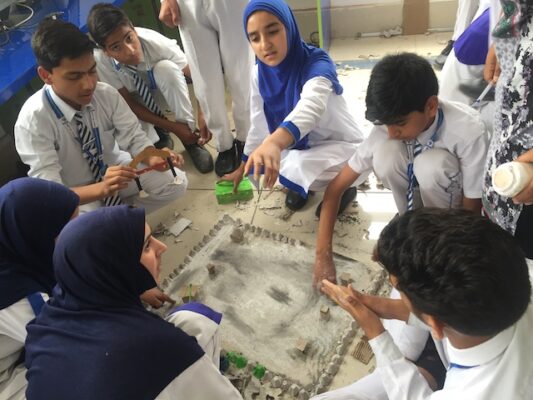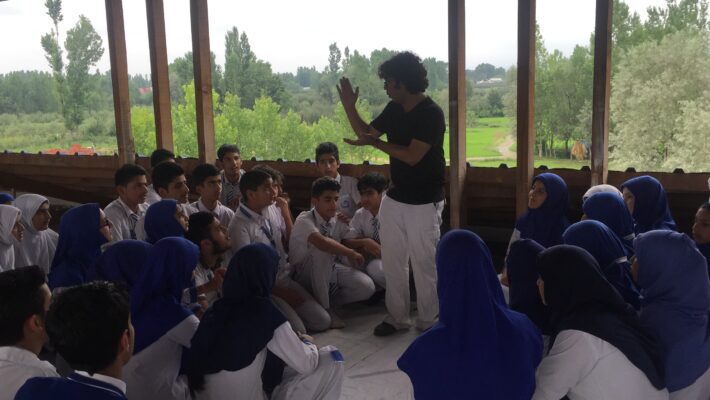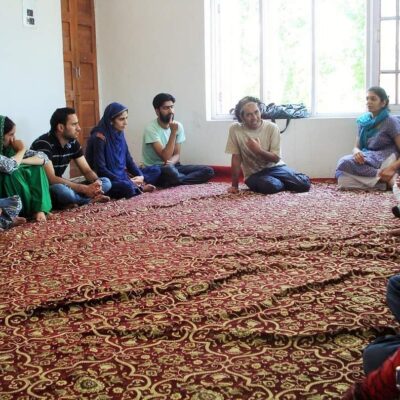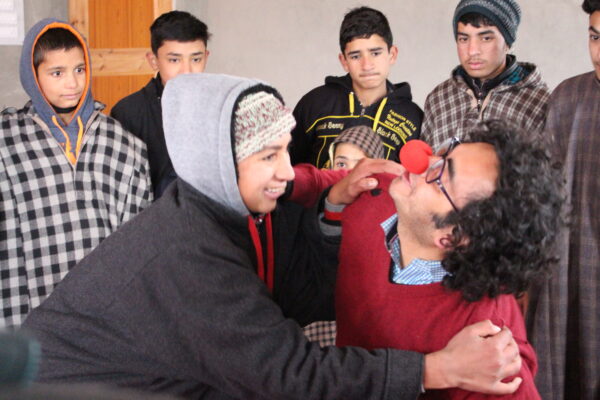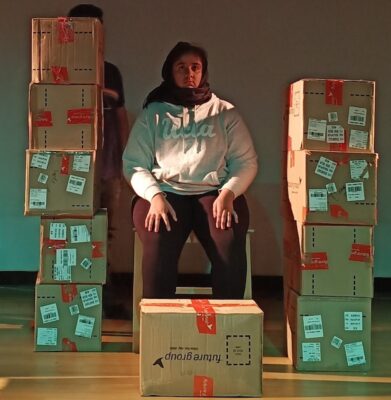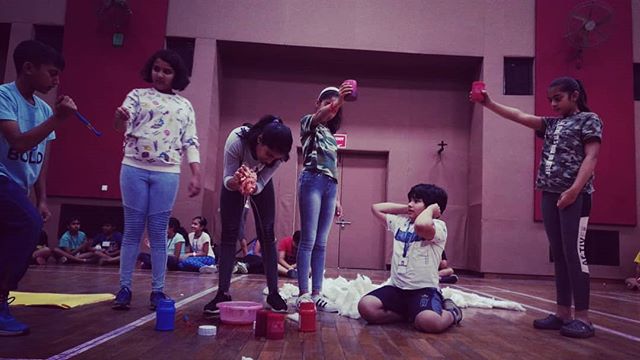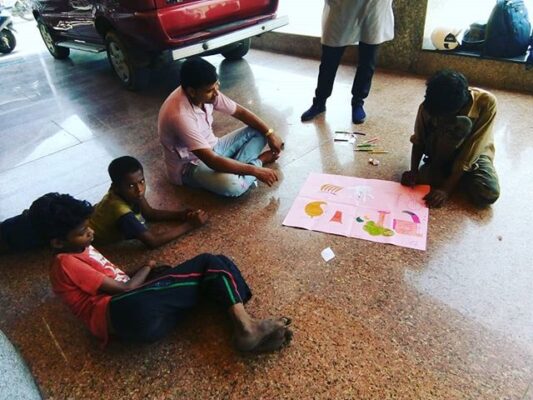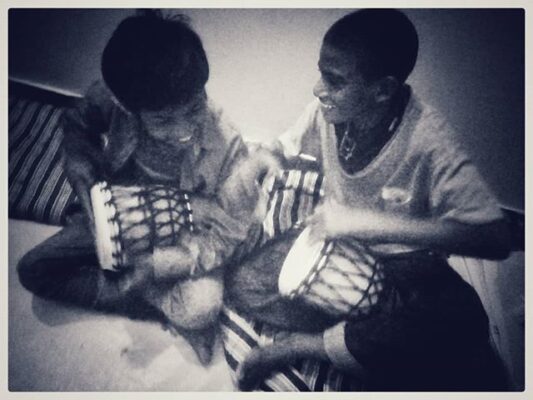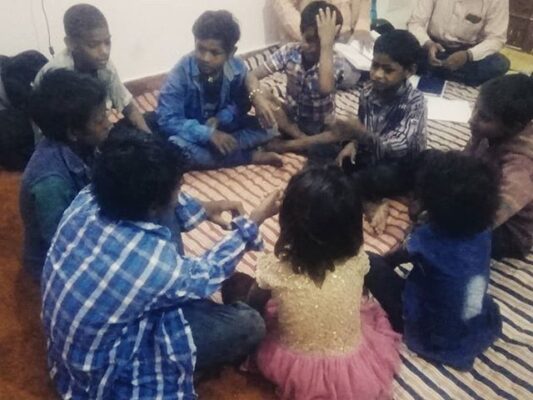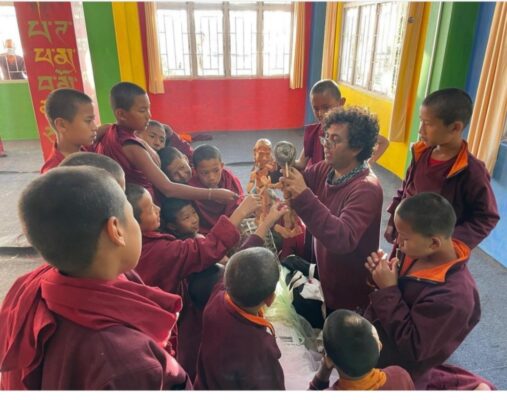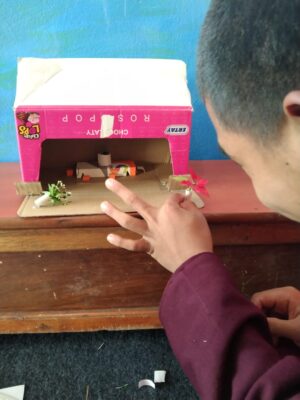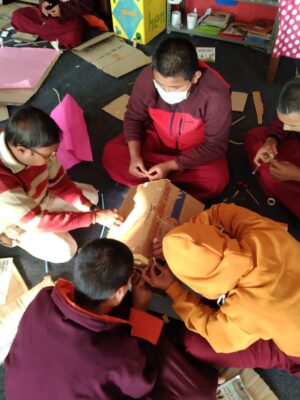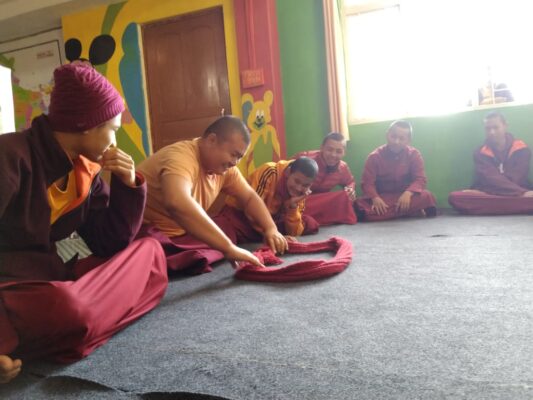Children with Social Conflict
Children Living With War
As the title suggests, it denotes transformative work for children in conflict areas, those who are displaced internally by war. These children are conflicted within by the political chaos that constantly pushes and pulls them in many directions. Being shut and disrupted by strikes break the rhythm of their schools. Political ramification dominates the mindscape of the children. The ruptures of daily life contaminate any other thinking or feeling that could be more person-centric.
My work in Kashmir, Manipur, Punjab, Sri Lanka, Cambodia, and with Afghan refugees and visitors, has been about healing the trauma through art and somatic experience. The continuous ruptures and the constant internal displacement make the children often very anxious. They have shutdowns and get into internal fights. Political harshness takes away their dignity and makes them highly vulnerable and prone to hyperarousal.
While living with tear gas shelling and constant curfew, deep crisis creates havoc on their mental health. It’s only through creative arts and reflective work with the arts that we could re-work our senses, relook at our reality, have artistic distance, and find our own moral grounding. Through their artworks, the children get a clearer picture of themselves and their larger reality. They get a chance to release, reflect, reassess their memory and rejoice.
Children living with social Failure
They work with runaway children, children in juvenile homes, children as child labourers, children in street shelters, all those who have fallen off the social grid. Working with the arts, the children find their homes in the arts. The metaphors guide them; the metaphors hold them. The metaphors the children bring in their artwork are often healing because they are transformative in nature.
They transport the children to another world that is caring and loving. The children through the arts bring about a nurturing and empowering world, which brings their voice, strength and resilience. The arts bring about the unsaid through projective techniques like puppetry, non-verbal movements, musical creations, material theatre, and visual arts. It’s through the body the children express their pain, a language – a vocabulary the children living on the margins express their pain, and it’s also through the arts they also express their possibility, their future.
Children Living in institutions
All institutions often generate discipline and punishment, it also brings about alienation. Even though all institutions don’t bring cruelty or harshness it does breed a space of disconnection from the outside world. If there is an atmosphere of harsh discipline, particularly with children who have been left in its care, the child will experience entrapment.
The arts with their skill-building generate imagination and the will to deal with the outside world. it helps in preparation for the outside world and also brings values in narratives that provide an antidote to the suffering and dissatisfaction that follows all human beings and especially when they live in a closed, total institution-like atmosphere.
It’s like filling up a hole in one’s belly with embodied wisdom that comes from the stories brought alive by an interplay of our various creative intelligence. The entire process takes place in creative group work with the children. They can see their own reflection in the art, like the reflection of their desires, their anger, their pain, their joy. They get a chance to have an artistic distance and an ability to witness their lives. The work with children living in institutions is to give them a certain preparation for the outside world, for them to have life skills that prepare them. The world of the arts gives them visibility, especially in the world of institutions that are robbing the children of their individuality, be it a school, orphanages, juvenile homes, or monasteries.
Adult Learners
Practioner
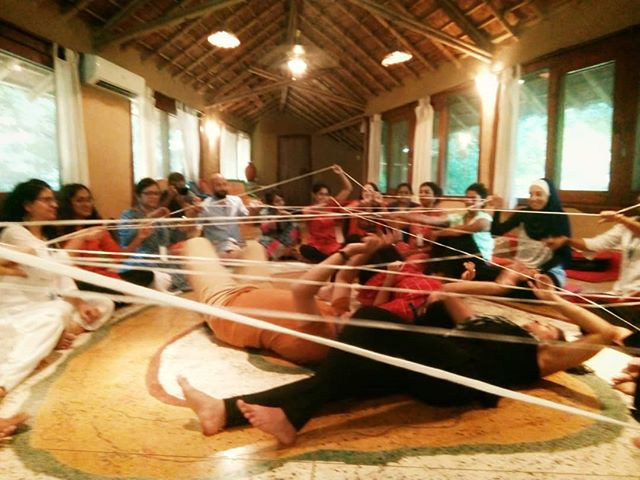
Many caregivers show the need to become arts-based therapists. BOAT, in the last seven years, has given training to various street educators, caregivers in Kokrajhar to work for mental health issues in conflict-driven areas between Santhals, Bod tribals and Bengali Muslims. The work with children whose lives get displaced by constant strife because of the intrapersonal community conflict.
We train counsellors working for the children of the Telegu speaking fishing community in Orissa who are sexually abused by tourists, both foreign and Indians.
We have another project in Rajasthan with the caregivers focussing on rescued child labourers. We have been building care systems through the creative arts and enhancing their capacity for the last two years. The team also works in Gorakhpur, a border town with Nepal working with street educators to work with runaway street kids on platforms.
In the last three years, there have been three arts-based therapy courses conducted by BOAT to bring about more practitioners in the world. The three of the courses happened in Delhi, Thane and Srinagar. There were three other courses that BOAT assisted – one was in Mumbai, another in Ahmedabad, and the other in Thane (Maharashtra).
BOAT is committed to training more and more practitioners in expressive therapies, especially when it comes to conflicted spaces.
Seekers
Natya Bodh or Theatre of Maturity/Awareness
This program is based on the philosophy that our expressions are reflections of our inner lives. The dynamics of these expressions create the ground of relationships generated between one human being and the other It’s self-exploration through the arts, bringing about various forms of interconnections with the insights generated by a process of self-reflection and active explorations of one’s inner world. If we change our perceptions, our consciousness changes; if our view changes, our suffering also changes. In order to continue this journey of change, we need a will. And, we need the skill to navigate ourselves through the imagination of our mind that brings about the birth of active imagination through these workshops.
The imagination brings about insights, that is the wisdom that supports and heals stress and routine. We, then, create magic out of the mundane. The program also looks at soft skills, the pedagogy of care, addressing both vulnerability and self-reliance, both for work and personal life. In the Theatre of Consciousness (Natya Bodh), the process is about transforming negative belief systems and bringing an understanding of victimhood culture, the perpetrator, and the rescuer. When we transform these archetypes, we get courage, wisdom and compassion.
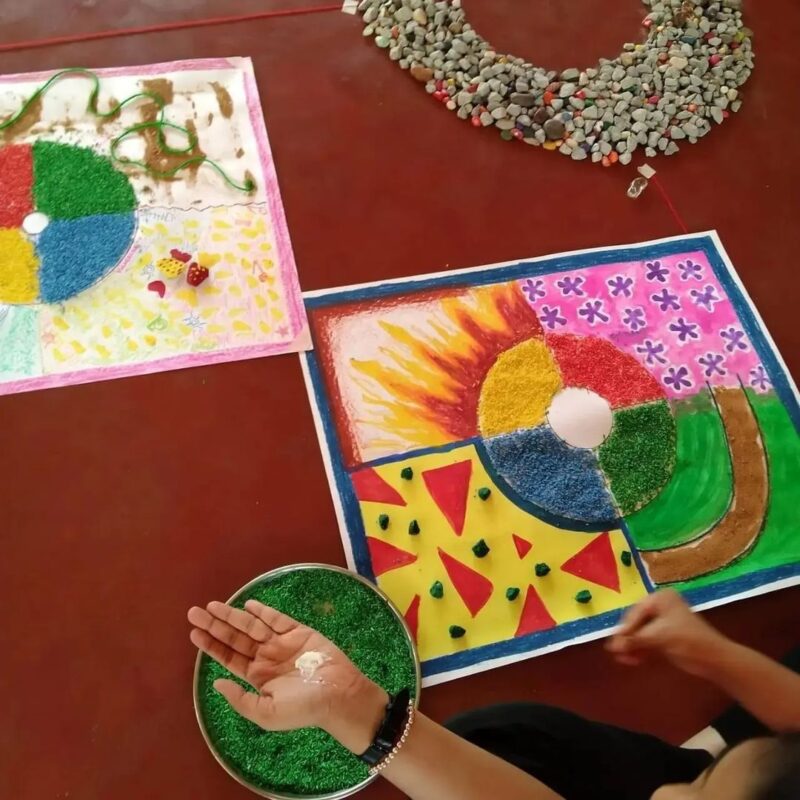
Trainers
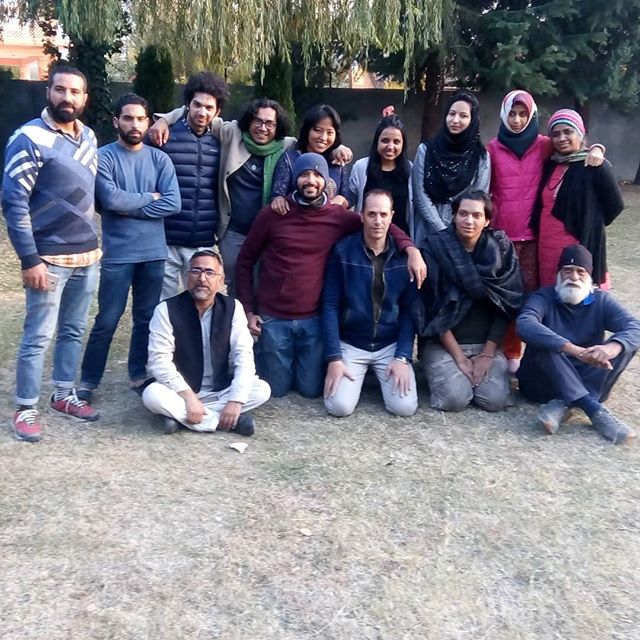
Inner reflections bring about our outer engagements. This is the core principle on which training takes place for those to want to use art-based instruments for social inclusions, therapeutic purposes and contemplative practices. We use art-based training for education and social change. In the last decade, more and more people have become interested in using art for their psycho-social development or the various communities’ psycho-social level.
The performing arts particularly operate through places, time and containers. In this case, the actor themself is the container. Here, we promote collective narratives and initiate narrative capability development. This brings about the community being an active agent of social change. This work is participatory and experiential in nature. The adults get direct experience on how to work with marginalised communities and also with the communities that need further development.
Parts of the Training:
The first part is Personal Unfolding, where participants explore their vulnerability through artistic means and discover the unstated and unacted parts of their life. The second part is Role Effectiveness, where after personally unfolding and exploring their fears, anxiety, vulnerability, they reach their voice of guidance. It’s only after this point they start exploring their skills and creativity in the context of the work they are doing.
The pieces of training are all about contextualising the arts in different social scenarios and creating skills for engagement with difficult social themes like sexuality, gender, violence, alcoholism, addiction, grieving, migration, etc.
Teachers
The work with teachers has a two-pronged approach, one is to inspire teachers to move beyond a didactic way of approaching a classroom and to use arts-based methods that are non – hierarchical, which creates some sort of equity between the teacher and the student and create a creative atmosphere for the students to experience learning that gives them a sense of belonging especially if we are working with the arts. These skills which they share with the students go beyond the school setting and provide the student with a sense of the future. This holds especially for the teachers working in conflict areas. The second approach with the teachers is to work with their inner vulnerability, by creating a space for contemplative art. This brings them to a more reflective space, where they are experiencing their own vulnerability and inner guidance. The use of creative arts helps them bring out their own expressive abilities. We would like the teachers to be champions for art-led activities and for child well-being, along with it also looking at their own well-being.

Theatre
Theatre for Young Children
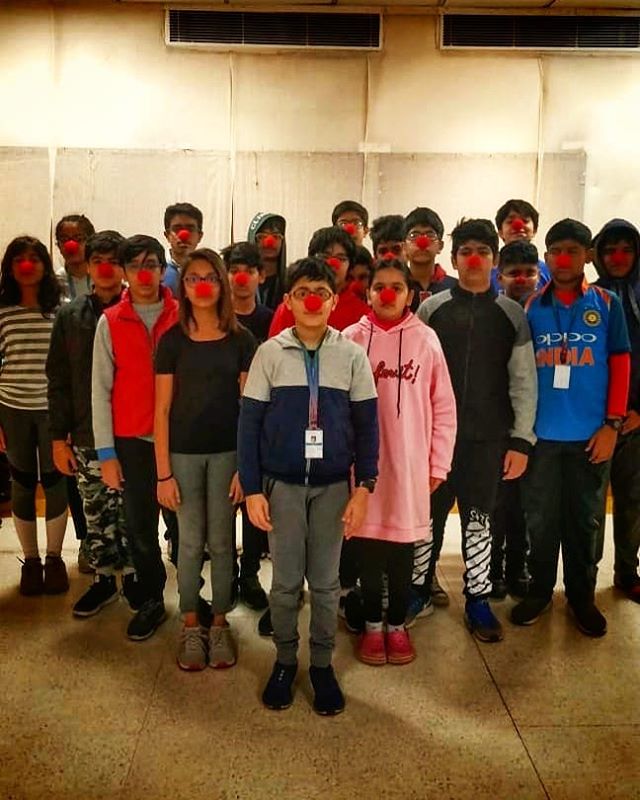
Theatre for children is more of a process-driven journey than product oriented. We do not necessarily display children’s skill here as to how well to display their theatrical abilities but to create spaces where children can reflect and contemplate on their behaviour and feelings through the character they are playing.
Here the play is a journey to create life skills like decision making, communication, confidence, creativity, imagination and the ability to see life’s theme through a theatrical distance.
Children are given skills of centring themselves to discipline through understating how to transform chaos into order. They learn how to empathise with others and step into someone else’s shoes. They learn how to think imaginatively and see how stories activate their senses, which result in them fighting against boredom and dullness effectively.
It helps them transport themselves into transformative spaces.
Theatre for young adults
This is a space where we work with young people on a threshold of them leaving their childhood behind and engaging with adult spaces. Here the theatre and theatrical themes become much more nuanced as we look at character building and role-playing with all its complexities.
We help young people to identify their own needs by extrapolating the characters they play on stage with their real life and the lives they see around themselves. Here, theatre becomes a vehicle for social-emotional learning.
Young people learn how to dramatize complex psychosocial situations with tactile materials. They learn how to communicate both verbally and non-verbally.
A certain hunger is also created within the young people for more creativity, for more creative engagements where they learn to know their values and discover personal truth, which leads them to anatomy and emotional empowerment.
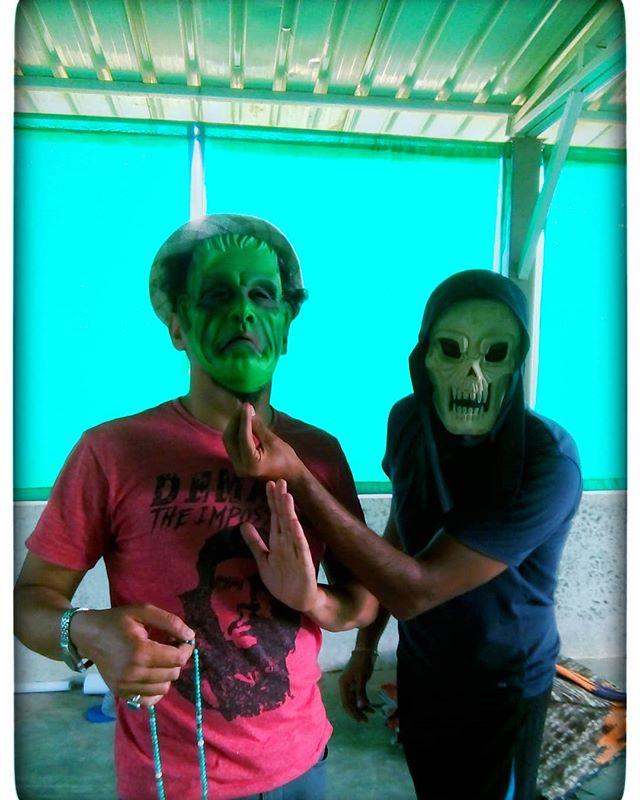
Community theatre
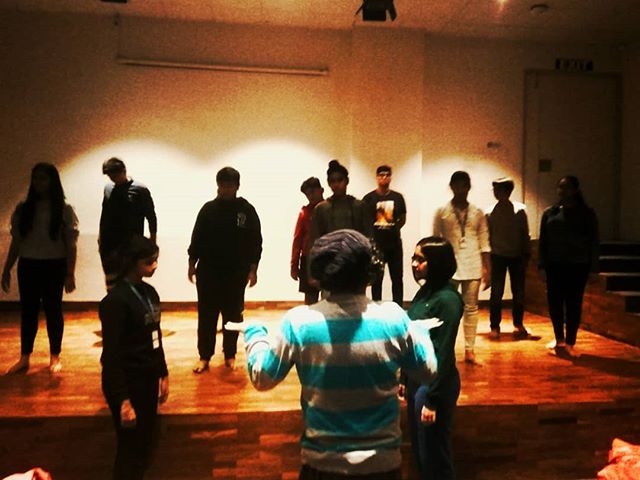
Community theatre is a process of creating spaces of interconnections and interdependence within teachers, students and parents. Here, the performing arts merge individual stories and create collective narratives while exploring the dynamics of power among communities.
This results in asking vital social questions, leading to group awareness. Then, we create transportive and transformative spaces through spontaneity and artistic skills. Community theatre is not based on the past but much more rooted in the present and envisions the future for a progressive educational community.
It creates a bridge of empathy for teachers, students and parents. This results in a non-hierarchical space with an all-levelling platform, where all are simply actors connecting and communicating with each other beyond social hierarchy and prejudices.
Community theatre is based on developmental themes where the stories develop alongside the changing perceptions. In these dramatic spaces, as soon as the perception changes, the reality changes too. And, the moment reality changes, we start having a solution-centric approach rather than a problem-centric approach for a thing. We become much more community-focused rather than becoming alienated individuals living in the post-pandemic world.

